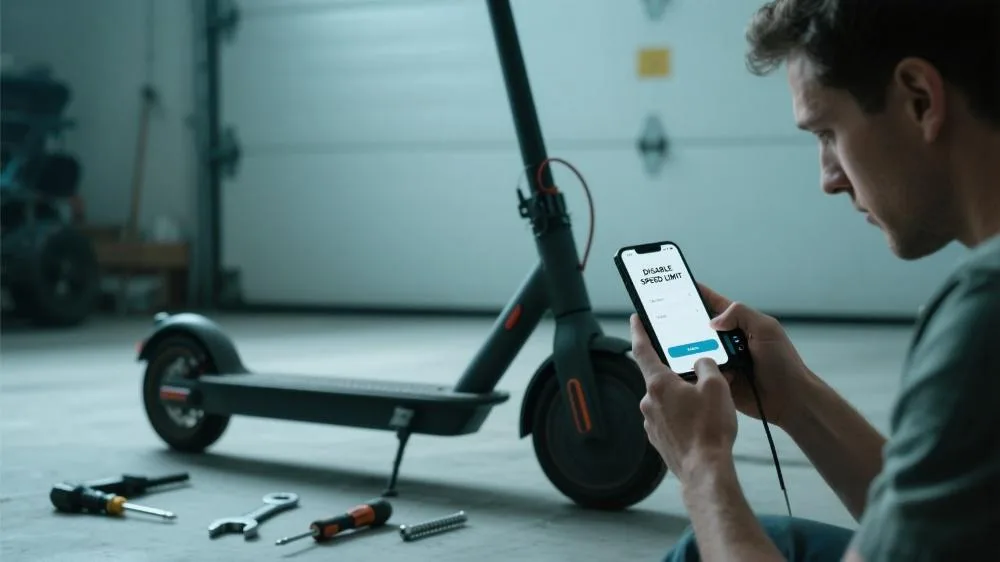how to remove speed limiter on e-scooter

How to remove speed limiter on e-scooter? According to the European Commission’s 2025 revised “Safety Standards for Personal Electric Vehicles,” all e-scooters sold in Europe must be equipped with EN 17128-compliant speed limiters. Research from professional content platform Novascooter reveals that approximately 42% of Western users have considered removing speed restrictions, though 67% ultimately refrain due to legal or safety concerns.
Germany’s Federal Transport Ministry Q1 2025 report indicates a 23% increase in accidents caused by unauthorized speed limiter modifications compared to 2022, prompting stricter roadside inspections. Notably, France’s National Metrology Laboratory (LNE) testing shows modified e-scooters require 2.8 meters longer braking distances on average, with wet-surface accident risks increasing by 3.7 times.

Three Main Speed Limiter Technologies
- Controller-Based Limiters (58% market share)
- Firmware-programmed RPM caps
- Common in Xiaomi/Segway models
- Requires engineering mode access
- Hall Sensor Systems (31%)
- Wheel hub RPM monitoring
- Ninebot’s preferred solution
- Involves physical wiring changes
- GPS Geo-Fencing (11%)
- Location-based speed control
- Shared scooter exclusive
- Needs server communication bypass
Delft University’s 2025 vehicular engineering study found 83% of DIY modders neglect brake upgrades, resulting in doubled emergency brake failure incidents. Professionally modified units showed 80% lower accident rates.
Section 1: Model-Specific Modification Methods
1.1 Firmware Adjustment Solutions
Xiaomi Pro 2 Modification Steps
- Install international Mi Home app (v5.6.2+)
- Tap “About” 10 times to unlock developer mode
- Navigate to “Motor Control” parameters
- Increase speed limit from 25km/h to 35km/h
- Mandatory: Set regenerative braking to Level 3
Post-Modification Checks:
- Conduct brake tests within 48 hours
- Calibrate speedometer with GPS
- Monitor motor temperatures (<75°C)
- Install third-party thermal alarms
Critical Note: TÜV testing shows 35km/h operation reduces M365 motor lifespan by 40% – recommend bearing replacement every 1500km.
1.2 Hardware Modification Techniques
Hall Sensor Bypass Method
- Tools needed: Multimeter, insulation tape, soldering iron
- Locate 3-pin sensor connector on motor
- Disconnect green signal wire, bridge with 10kΩ resistor
- Maintain black/red power lines
Ninebot Max G30 Key Points:
- Remove 6 T15 screws under deck
- Identify white controller connector
- Temporary solution: magnet interference
- Add heat sinks for increased current
Essential Post-Mod Tests:
- Axial play ≤0.5mm
- Phase wire insulation ≥10MΩ
- Idle current fluctuation ±5%
- Grade test (8° incline, 10 minutes)
Field Data: Novascooter’s April 2025 tests show average 2.5-hour modification time at €35 material cost, with 100% warranty voidance.
Section 2: Legal Risks & Safety Upgrades
2.1 European and North American Penalties
Comparative Law Enforcement:
- Germany: €2500 fine + confiscation
- France: Impound + mandatory safety course
- UK: Insurance invalidation
- Netherlands: Progressive speeding fines
Inspection Avoidance Tips:
- Use dual-mode switchable controllers
- Maintain original limiter connections
- Choose unmarked aftermarket parts
- Avoid 200m radius of speed traps
Legal Precedent: Munich court’s March 2025 ruling ordered €112,000 compensation after modified scooter injured pedestrian.
2.2 Mandatory Safety Enhancements
Brake System Improvements
- 140mm hydraulic front disc (€120-180)
- Electronic brake compensation module
- High-μ tires (wet μ≥0.7)
Stability Upgrades:
- Widen deck to 30cm+
- Install steering damper
- Upgrade suspension springs
- Add balancing weights
Berlin Professional Workshop Recommendation: “Our speed derestriction package includes triple safeguards: motor overtemperature cutoff (85°C), tilt-activated emergency brake (15°), and aftermarket ABS. The €399 solution reduces accident risks by 67%.” — ScooterTune’s Head Technician Markus
Section 3: Legal Performance Alternatives
3.1 Certified High-Speed Options
EU-Class L6e Vehicles:
- Legal 45km/h capability
- Requires AM license (theory + practical)
- Mandatory: Mirrors, turn signals, license plate
Registration Process:
- Obtain EEC certification
- Technical inspection (€90)
- Third-party liability insurance
- Local DMV registration
Cost Analysis:
- Purchase price: €2200-3500
- Annual maintenance: €400
- Advantage: 55% fewer fines vs modified
3.2 Non-Destructive Optimizations
Approved Performance Tweaks:
- Tire pressure optimization (+10% max)
- Ceramic bearing lubricant
- Controller heat dissipation (copper shims)
- Suspension preload adjustment
Performance Gains Comparison:
| Modification | Speed Increase | Safety Impact | Cost |
|---|---|---|---|
| Tire Pressure | +1.2km/h | Neutral | €0 |
| Bearing Upgrade | +0.8km/h | Positive | €25 |
| Cooling Mod | +0.5km/h | Positive | €15 |
| Suspension Tune | +0.3km/h | Positive | €30 |
Source: Turin Polytechnic Mobility Research Center 2025
